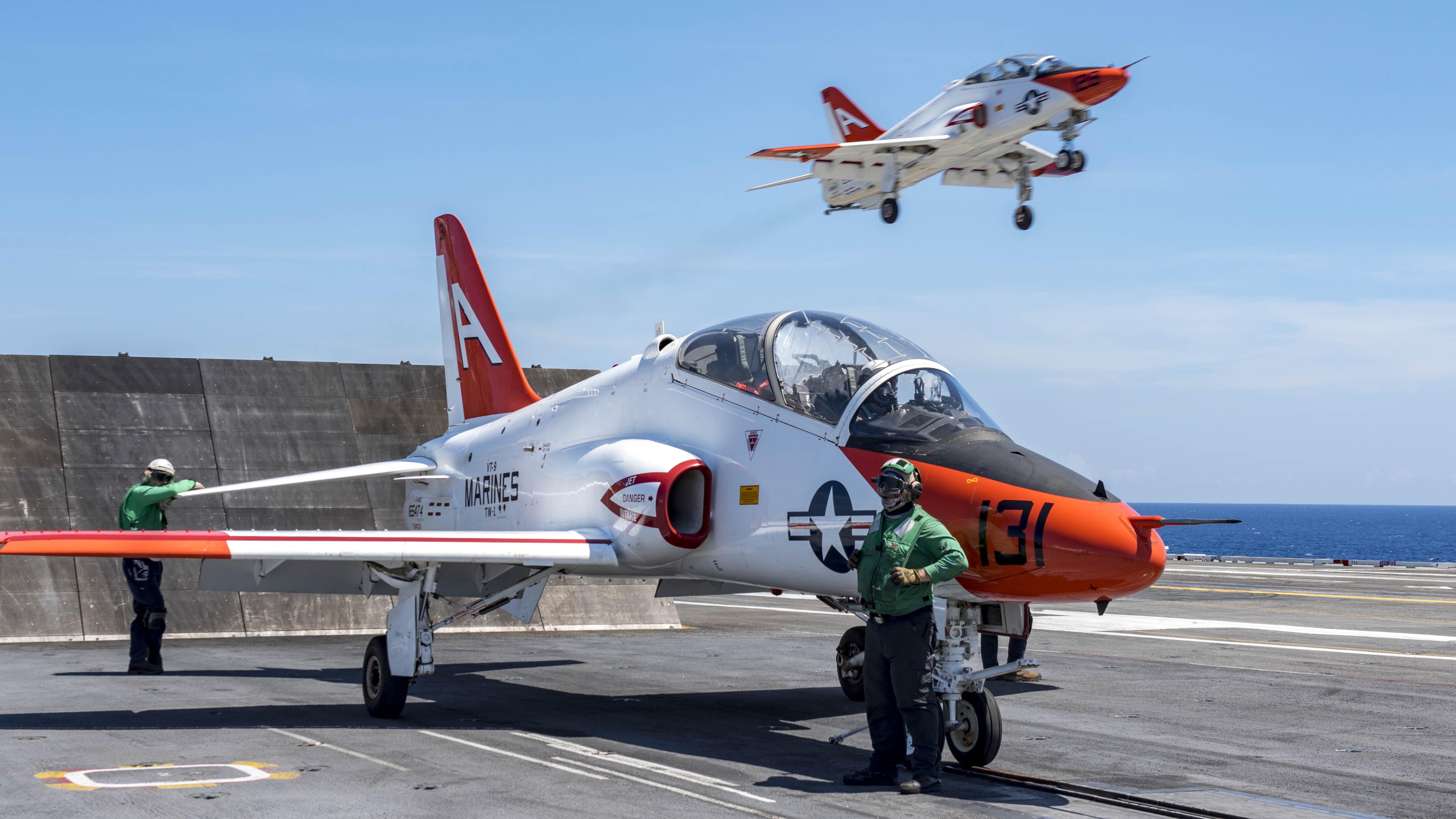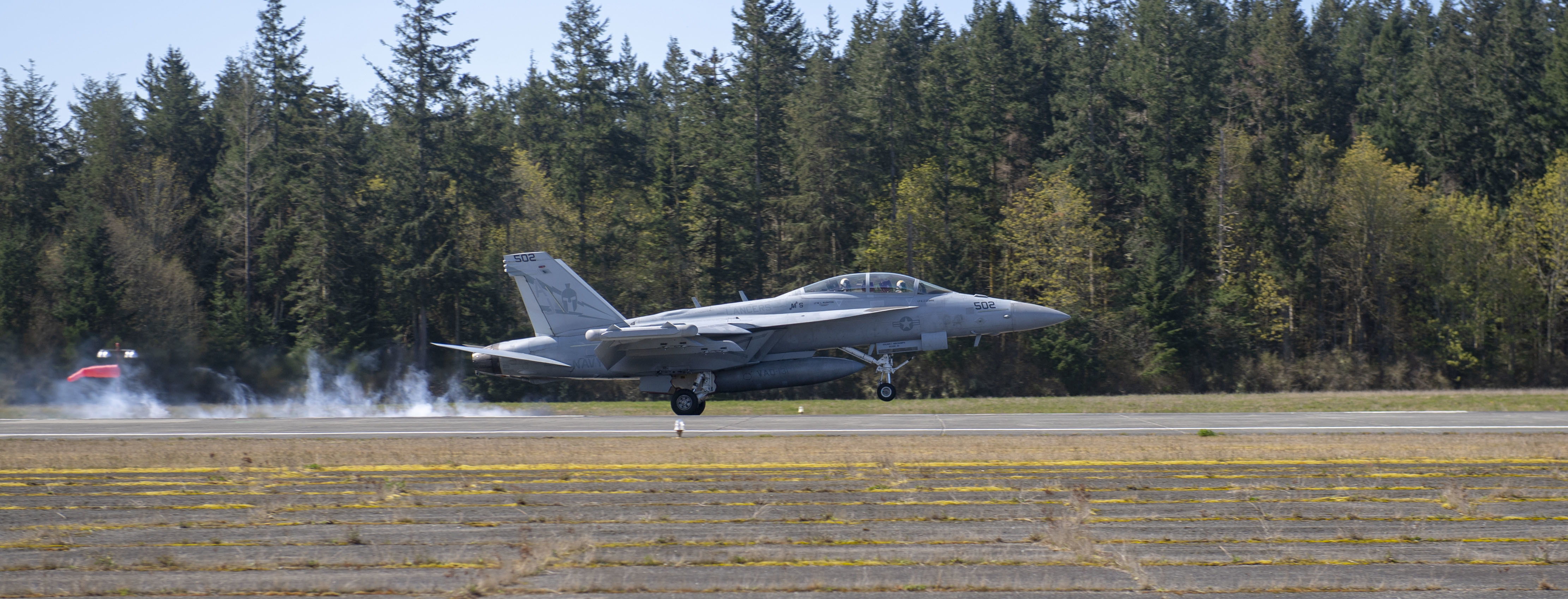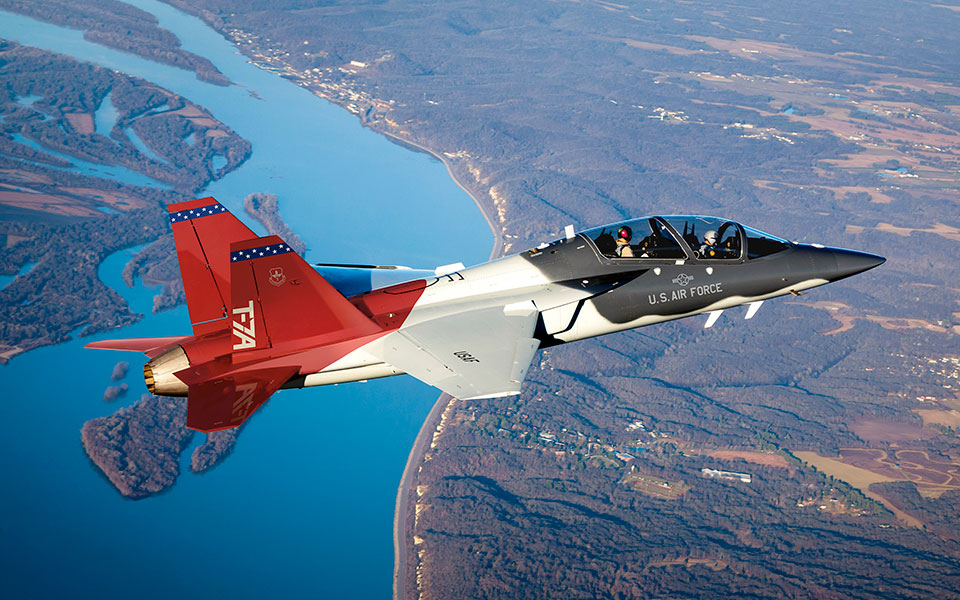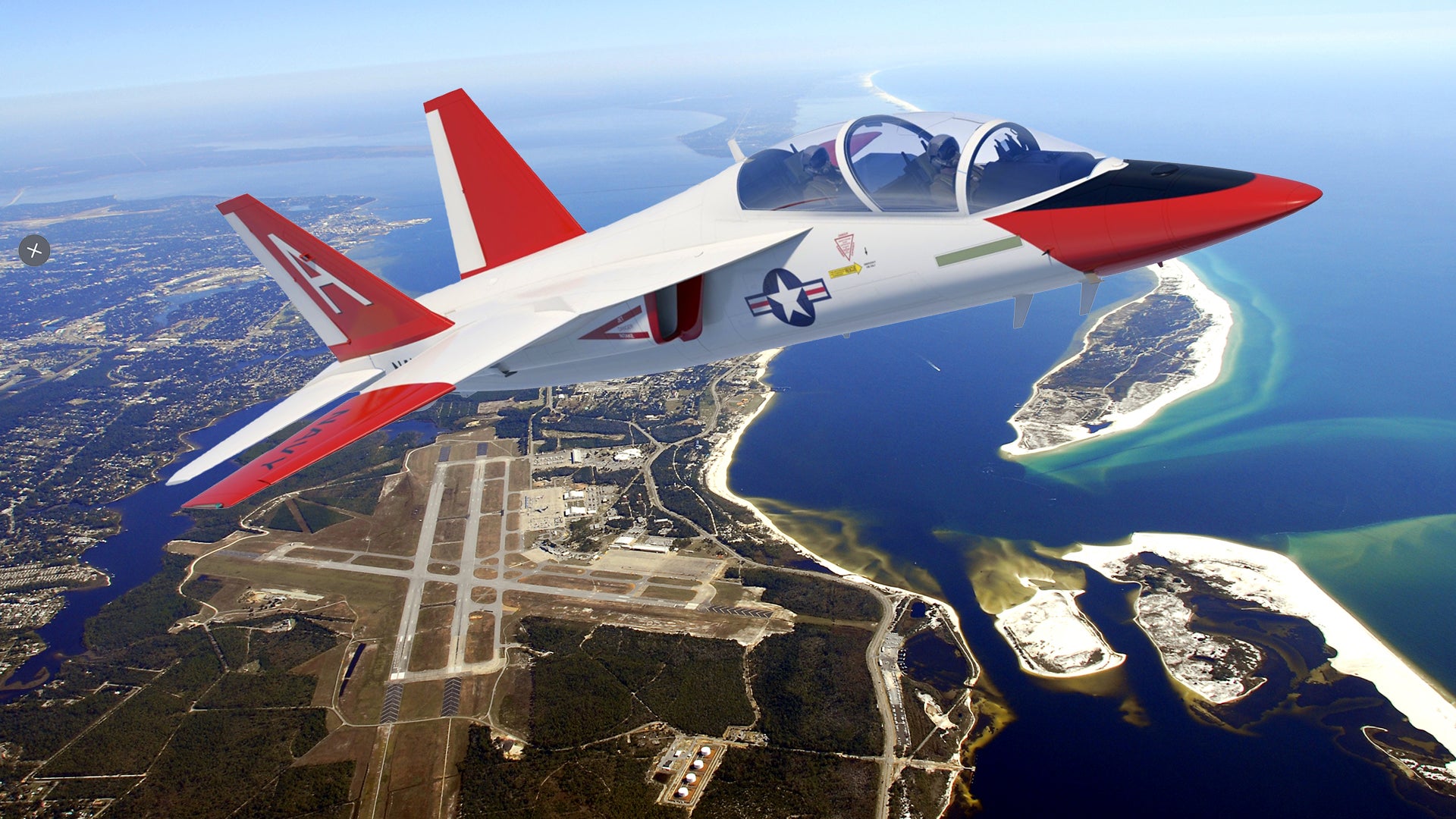The U.S. Navy is set to pick between options from at least three manufacturers as it seeks to replace its T-45 Goshawk with a new advanced jet trainer. Offerings from Boeing, Leonardo, and Lockheed Martin are all in the running for the Navy’s Undergraduate Jet Training System (UJTS), which is set to be introduced as part of a wide-ranging overhaul of the way the service trains its Naval Aviators.
Two U.S. manufacturers confirmed to Janes today that they would be competing to supersede the T-45, with Boeing pitching a version of the T-7A Red Hawk that’s been selected as the U.S. Air Force’s next-generation jet trainer. Meanwhile, Lockheed Martin will again team up with Korea Aerospace Industries (KAI) to offer the T-50A. If either of those jets is chosen, the Navy will get its hands on its first supersonic advanced jet trainer.

The T-7A beat the T-50A for the Air Force’s T-X requirement, which also saw the Leonardo M-346 Master rejected. Not surprisingly, the M-346 is the Leonardo entrant for the Navy trainer competition, the Italian firm’s bid being formally announced at the Sea Air Space 2021 maritime exposition, which took place from August 2-4, at the Gaylord National Convention Center, Maryland.
After losing T-X, however, the T-50A received an apparent lifeline from the Air Force when the service decided to look at buying a small number of the jets off the shelf, as part of its ongoing studies into its future pilot training syllabus. That plan was then thwarted when the Air Force announced it would instead hold an open competition.
According to a Boeing presentation circulating in the public domain, and dated April last year, the Navy’s Red Hawk is designated T-7B, by the company at least, and is intended to have a cost per flying hour of $7,200, compared to $10,700 for the T-45C. Changes that would be made compared to the land-based variant include increased internal fuel capacity, while there are options for wingtip stations to mount captive AIM-9X missiles or ACMI pods for adversary missions, as well as an internal infrared search and track (IRST) system. The cockpit would be reconfigurable to replicate the F/A-18E/F Block III or the F-35, while a jamming pod would be another option for red air work. This information very well could have changed, but gives an overall idea of the transformative capabilities a Navy T-7 could provide.
So far, it’s not clear what kinds of changes would be incorporated in the Navy version of the T-50A. However, a Lockheed Martin official told Janes that the company was offering “modest modifications to the baseline T-50A” to meet the requirements in the service’s request for information.

Moreover, it’s possible that differences between the Navy’s chosen jet trainer and its land-based counterpart will be generally limited. After all, as The War Zone has discussed in depth in the past, the service is not looking for an aircraft that can perform catapult launches or arrested landings aboard aircraft carriers, as the T-45 can. Instead, the new aircraft is required only to perform touch-and-gos on flattops, to familiarize aviators with the basics of shipborne operations.

Meanwhile, there could also be other potential candidates for UJTS, although realistically they only have an outside chance. The British manufacturer BAE Systems was responsible for the T-45 Goshawk design that was produced in collaboration with McDonnell Douglas (later Boeing) as a highly modified, carrier-capable version of the Hawk. BAE Systems still builds the Hawk, in its second-generation Hawk Advanced Jet Trainer (AJT) iteration. The Hawk AJT was not offered for T-X, BAE Systems instead deciding that the Air Force specification demanded an all-new design and, in the UJTS category, the British design is likely also unable to meet adversary performance requirements.
Perhaps the most surprising apparent entrant in the UJTS competition is the Hindustan Aeronautics Limited (HAL) Light Combat Aircraft, or LCA, which is operated by the Indian Air Force as the Tejas. While the Indian Navy has already rejected a navalized LCA as a potential carrier-based combat jet, HAL has flown a two-seat LCA Navy prototype and the aircraft seems to have been offered to the U.S. Navy as a trainer, although its chances of success must be considered extremely slim.

With the U.S. Air Force having said it will buy at least 351 examples of the T-7A, and possibly up to 475, this option as the basis for UJTS could make the most sense fiscally. A significant production run planned at St. Louis, Missouri, would help with economies of scale and there would likely be a degree of commonality across synthetic training, maintenance, and logistics.
However, the cost won’t be the only factor that’s under scrutiny. The request for information posted by NAVAIR on May 14 last year makes it clear that a non-developmental aircraft is required and that, while it won’t have to be fully carrier compatible, it will need to make touch-and-gos on deck, as well as perform Field Carrier Landing Practice (FCLP) — essentially the same thing, but on a land-based airfield. How the aircraft deals with high sink rate landings, and lots of them, will be critical, but eliminating the stresses of arrested landings and catapult launches will greatly reduce the modifications needed for existing designs.

The Navy says it expects each UJTS aircraft to complete 400 flight hours each year, in the process recording around 1,200 FCLP landings ashore, as well as up to 45 touch-and-gos on actual carriers.
Whatever option is selected for UJTS, it’s becoming increasingly clear that replacement of the T-45 is becoming a priority for the Navy. These jets, around 194 of which are in service, were once planned for withdrawal in 2018, before it was decided to extend their service life through 2042. In the meantime, readiness rates have worsened, and between 2016 and 2017, the jet also suffered a number of high-profile hypoxia incidents, the cause of which turned out to be a complex combination of factors.

On the other hand, Boeing’s T-7B proposal from last year involves only a “partial T-45C replacement,” with the aircraft also being used for adversary air missions. The third part of its mission would be “tactical auxiliary” — downloading training hours from expensive-to-operate F/A-18s and F-35s and preserving these frontline combat jet’s precious airframe hours.
The adversary portion of the UJTS program could also have a significant influence on the design that gets chosen. The demand for red air is only set to grow and the performance demands of adversary jets are increasing, too. This would seem to play to the strengths of the T-50A and T-7 in particular, both of which offer fighter-like performance, although the lower-performing M-346 is also already in regular use as an aggressor platform, too. Whichever jet is chosen, it could help eventually replace the Navy and Marine Corps F-5 fleet, despite fleet expansion and upgrades that are already in the works for those jets. In the meantime, to meet a voracious appetite for red air work in the community, the Navy is adding surplus USAF F-16s for adversary duties, too, a process you can read more about here.
Currently, there is no publicly available schedule to indicate when the Navy might select a new trainer and when it might start purchasing them. However, the service has said it wants to start replacing the first T-45s around 2028. In its proposal, Boeing projects that it could deliver a first example of the T-7B to the Navy as early as June 2025. With that aggressive timeline in mind, we might not have to wait too long until a T-45 successor is selected.
Editor’s note: Updated to mention Boeing’s plans for its Navy T-7 could have changed from the basic information in the public domain from last year.
Contact the author: thomas@thedrive.com
